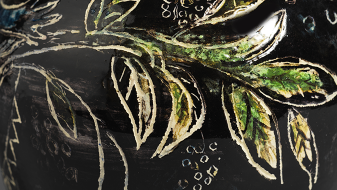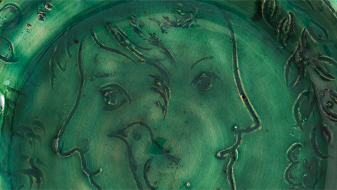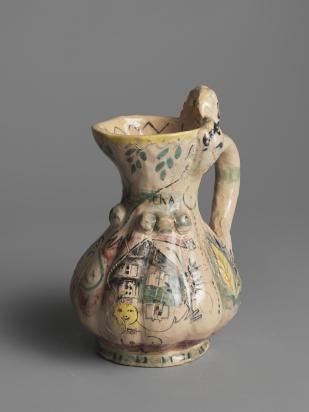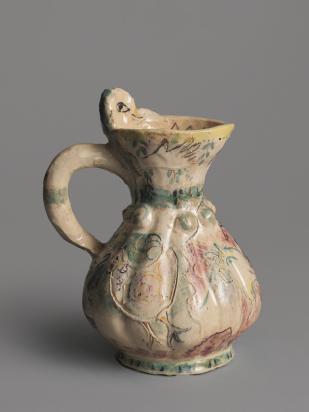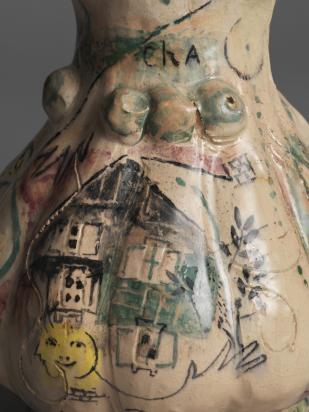Produced at the Madoura studio in 1952, The House is an anthropomorphic pitcher whose round belly and ribs flaring out into a corolla recall the shape of the Vallauris-made pitcher known as a “coucourdon” (“calabash”)1. From this starting point, Chagall designed its shape as a body with the heads of two figures, added an irregular handle forming the arm of one of them and decorated the inside of the neck with a mischievous-looking bird's head. The deliberate archaism and the addition of modelled elements recall Russian folk art and the raw materiality of the whistles produced in the areas of Dymkovo, Filimonovo, Skopine and Vyrkovo2. The decoration, which runs all around the belly, features iconographic motifs finely engraved in the still-unfired pinkish-beige clay: a house, a rooster, a goat and a fish in shades of green, yellow and pink. A surprising frieze of breasts in relief forms a string of beads around the neck, stressing the hybrid nature of the anthropomorphic shape3. The complex decoration, revealed as one turns around the piece, is based on the central motif of the house and a dual-profile yellow figure. As its title suggests, The House underlines the link Chagall established between the earth of his origins, his home and his adopted country: "When I came to France, soil was still clinging to the roots of my shoes. It took a long time for it to dry and fall off. When that happened, independent of my will, I had to find another reality. I found it in the landscapes of France, the flowers of the Midi, the horizons of Peïra-Cava, the earth of Gordes or Roussillon, the deep reds of Mexico ... But this is only possible for those who have held onto their roots. Keeping them or finding others is a real miracle.”4. The house, a recurring image in Chagall's art, is a key marker of his identity. It anchors those who live in it and protects them from the outside world, offering them shelter and stability. Chagall depicted it in every medium, allowing him to develop a form of symbolic autobiographical representation that is also found in the prints of My Life (1922) and Self-portrait Mouth House or Self-portrait with House (KO 30) [Autoportrait Bouche Maison ou Autoportrait avec la maison (KO 30)] (1922 - 1923).
Ambre GauthierCeramic
